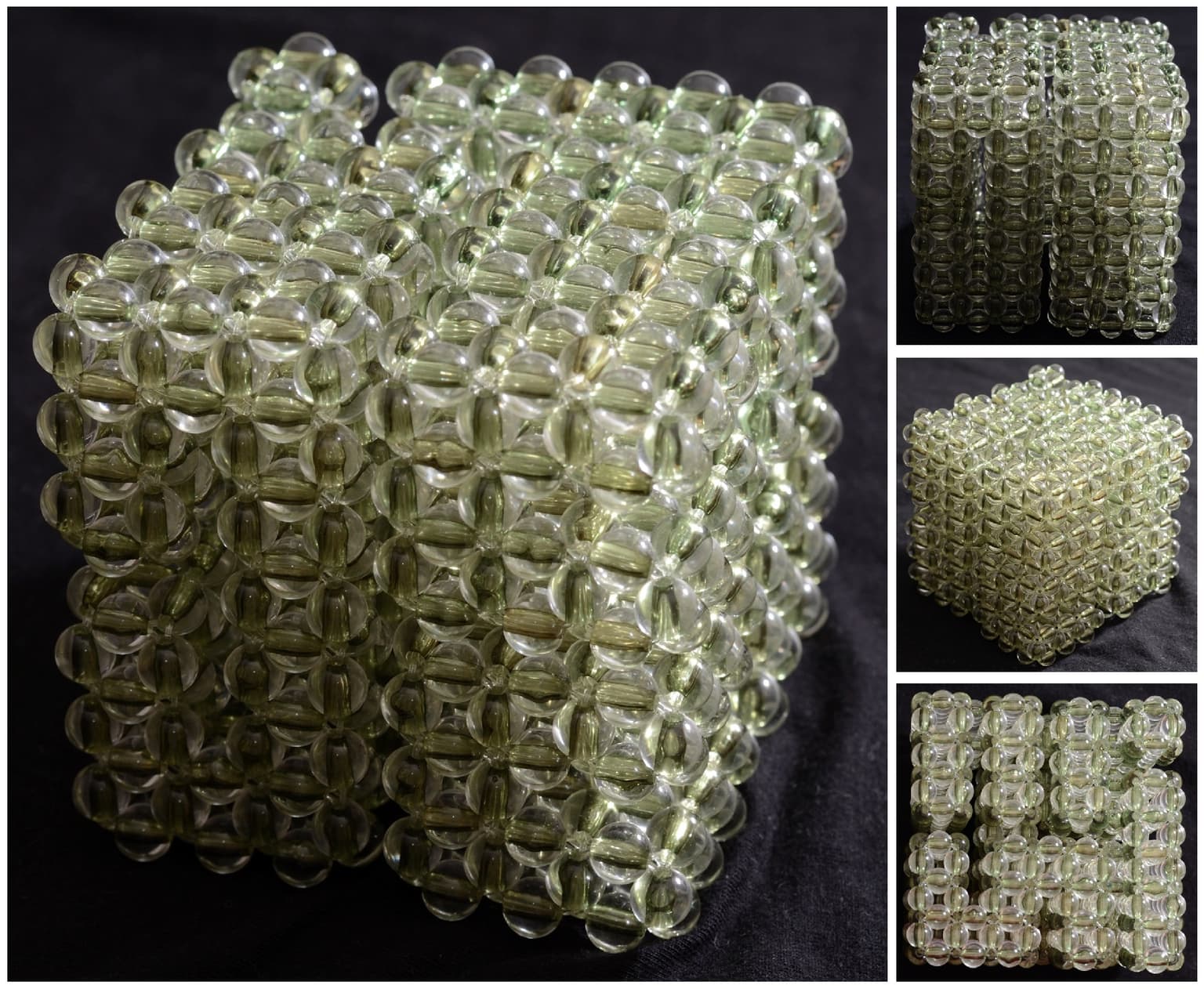2013 Joint Mathematics Meetings
Chern Chuang, Bih-Yaw Jin and Chia-Chin Tsoo
Artists
Bih-Yaw Jin
Professor
Department of Chemistry, National Taiwan University
Taipei, Taiwan
Statement
Using the beaded realization of three canonical triply periodic minimal surfaces which are frequently encountered in material and biological sciences, we demonstrated at last year's exhibition that mathematical beading applies to the simulation of chemical structures. We show here a beaded sculpture of Hilbert's space-filling curve, a purely mathematical object, made with the same methodology. The so called right-angled weaving technique proves to be a reliable way of constructing three-dimensional objects provided that appropriate designs of the structures are given. The resulting artworks are of considerable interest with regard to both mechanical stability and aesthetics.
Artworks

Beaded Hilbert Curve, Step Two
12cm x 12cm x 12cm
Double layered plastic beads with fish lines.
2012